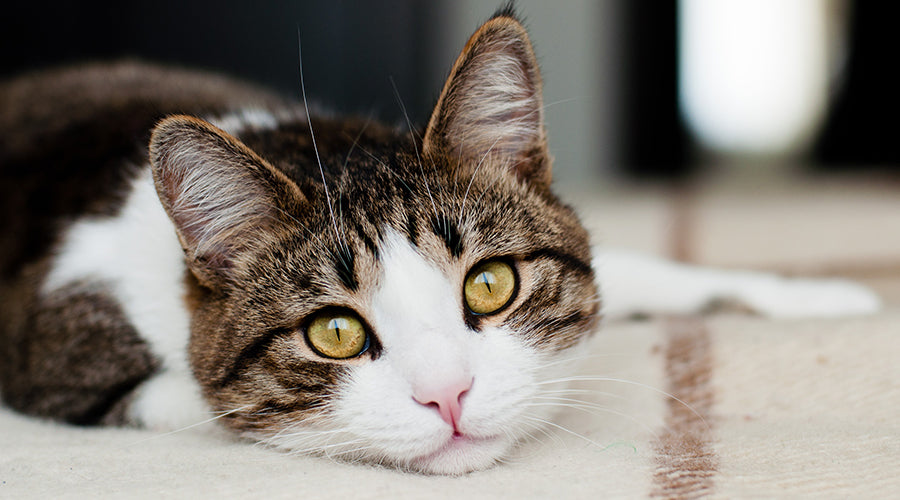SPECIALS: up to 35%SAVINGS on Bundles+FREE Shipping on USA orders over $35
SPECIALS: up to 35%SAVINGS on Bundles+FREE Shipping on USA orders over $35
Add description, images, menus and links to your mega menu
A column with no settings can be used as a spacer
Link to your collections, sales and even external links
Add up to five columns
Add description, images, menus and links to your mega menu
A column with no settings can be used as a spacer
Link to your collections, sales and even external links
Add up to five columns
Add description, images, menus and links to your mega menu
A column with no settings can be used as a spacer
Link to your collections, sales and even external links
Add up to five columns
Add description, images, menus and links to your mega menu
A column with no settings can be used as a spacer
Link to your collections, sales and even external links
Add up to five columns
5 tips for cats that hate being groomed
June 01, 2020 3 min read

Will your cat do anything to avoid being groomed? This is the blog for you! Here are five tips that will make the grooming process more enjoyable for your feline companion.
You may be asking yourself why grooming your cat is important. Don’t they groom themselves? The short answer is – they do, but a little assistance goes a long way! Brushing your cat two or three times a week can drastically reduce hairballs, especially for the long-haired breeds. Regular grooming sessions can also help cats get used to being handled. And, while you’re there, you can do a thorough check for fleas, cuts, scrapes, bumps or other problems that you might not otherwise notice. But of course, all of this is difficult if your cat reacts negatively to being groomed!
Why your cat might hate being groomed
Your cat’s negative behavior toward grooming is likely not isolated. In other words, it usually stems from a larger issue. Here are some reasons why your cat might hate being groomed:
- She’s scared of the grooming process. Remember that cats are small animals, and sometimes coming at them with a foreign object like a metal grooming tool can be scary!
- She previously had a bad experience with grooming. Cats with previous caretakers might have been muzzled, hit, sedated or had their coats lion shaved in the past – situations that can be very traumatic!
- She doesn’t enjoy being handled in general. Some cats just have stand-offish personalities which don’t always mix well with being handled.
- She has a very matted coat. Cats with extremely matted coats can have sensitive skin, so even gentle teasing with a comb can cause pain.
What should you do if your cat falls under one of these categories? Don’t worry, we’ve got you covered!
Tips to make grooming a positive experience!
For those of you with a picky or avoidant cat, here are some tips for you to make regular grooming easier:
1. Use the right tool
There are a variety of brushes and combs available for grooming cats, but remember that ones with sharp metal bristles can scratch your furry friend, and fray her hair. Always use a gentle grooming tool that is flexible and will remove loose hair without harming your cat’s skin and coat.
2. Form a positive association with grooming
To help negate any fear or negative association to grooming, work on changing your cat’s attitude to the activity in general. In the beginning, that can look like gently encouraging her to interact with the grooming brush, then rewarding her when she sniffs or rubs against it. Whenever possible, start this process from a young age, so that your kitten gets used to that form of attention as she grows.
3. Start small
Don’t try to brush your cat’s coat all at once. She may be able to tolerate a few minutes, but will likely get restless or irritated after enough time has passed. Listen and pay attention to your cat’s cues – respecting her space will do wonders in the long run!
4. Choose a calm environment
Don’t try to brush your cat in a space where there’s lots of loud noises, running kids, or rambunctious activity. Find a time when your kitty is relaxed in one of her favorite spots, or when she comes over for a cuddle.
5. Use some treats!
Don’t be afraid to reward positive behavior! Giving your cat a special treat whenever she sits well for grooming. Eventually, she’ll start to associate the activity with happy rewards.
Remember, grooming doesn’t have to be a negative experience for you or your cat! Using the right tools and positive reinforcement can go a long way, and help make regular grooming a happy time to connect with your fluffy feline.
Subscribe
Sign up to get the latest on sales, new releases and more …
